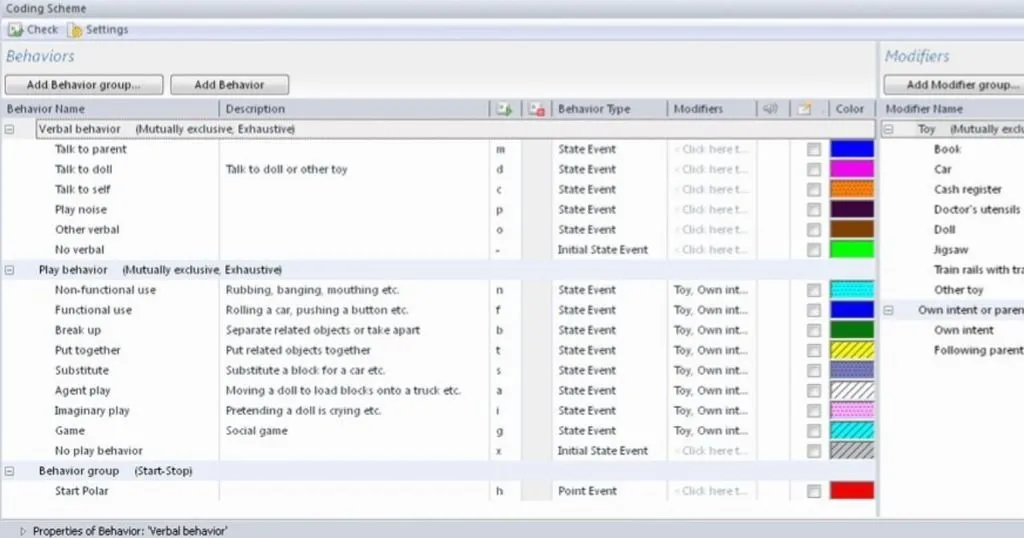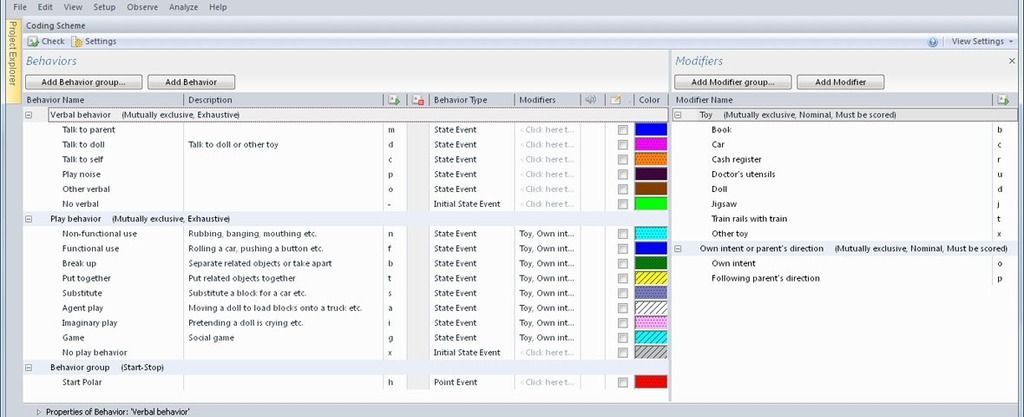7 Tips how to set up a coding scheme
The coding scheme or ethogram determines what data you collect and is, thus, an essential part of your behavioral study. Tips to set up a coding scheme (+free white paper with all 7 tips to set-up your coding scheme).
Posted by
Published on
Thu 31 Jan. 2019
Topics
| Classroom Observation | Coding Schemes | Consumer Behavior | Education | Mobile Observation | Labs | On-site Research | Portable Lab | The Observer XT | Video Observation |

The coding scheme or ethogram determines what data you collect and is, thus, an essential part of your behavioral study. How to develop a coding scheme that will provide you with the information you need? You can set up your coding scheme on paper, but you can also use The Observer XT software, a tool that can assist you in the entire workflow of an observational research project.
How to set up a coding scheme (+ FREE white paper with all 7 tips to set-up your behavioral coding)
So let's start at the beginning:
- Set up a draft coding scheme or start with a template - As a behavioral researcher you will recognize the need for a well-defined coding scheme. In many cases your coding scheme is not perfect at the beginning. Some behaviors may be too detailed and others may be missing. The Observer XT software allows you to fine-tune your coding scheme while observing.
You can add elements during scoring and afterwards reorganize your coding scheme and delete redundant elements. This means that you can start your observations with a draft coding scheme and develop and refine it to bring it to perfection. You can also decide to start your observation with a coding scheme from a template and adjust it so it fits your research needs.
- Specify your subjects, behaviors, and modifiers - In the coding scheme you can define your subjects and behaviors and use modifiers to specify your subjects and behaviors more precisely. Examples of modifiers are the number of words an infant utters when speaking or the person whom the focal subject is talking to. Modifiers can be nominal or numerical. The order in which you score the coding scheme elements is not fixed. You can score your data in the order you prefer, instead of subject – behavior - behavior modifier, you can score, for instance, behavior - behavior modifier – subject.
It is not mandatory to score all four elements, you can use any combination you like, for instance, score subjects and behaviors without modifiers or score behaviors only. In fact, you can also decide to score none of the usual elements (subjects, behaviors, and modifiers), but record comments only. You can start your study by registering comments, synchronized with video or in a live situation. Based on these comments you can make a draft coding scheme and use this to start scoring.
Define your behavior group - Depending on your research you may want to know the duration, frequency, and/or sequence of behavior. In The Observer XT you can define your behaviors as state or point events. State events have a duration, point events don’t. Eye blinks for instance are often defined as point events because of a negligible duration. State events may be defined either as ‘mutually exclusive’ or ‘start-stop’.
Want all 7 tips to create your scheme for behavioral coding? Download the white paper and get started with your own coding schemes.
Related Posts

3 debriefing steps to evaluate a training session

Robot-child interactions – helping children with autism learn skills

